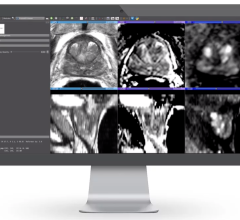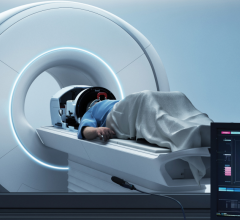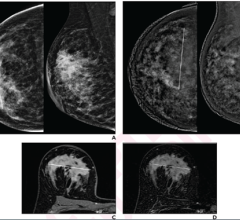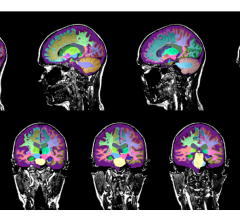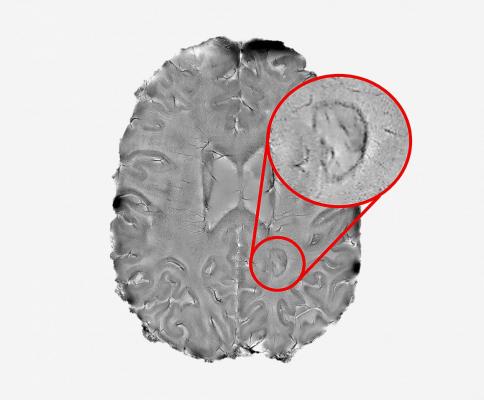
NIH researchers found that dark rimmed spots representing ongoing, “smoldering” inflammation, may be a hallmark of more disabling forms of multiple sclerosis. Image courtesy of Reich lab, NIH/NINDS.
August 22, 2019 — Aided by a high-powered brain scanner and a3-D printer, National Institutes of Health (NIH) researcherspeered inside the brainsof hundreds of multiple sclerosis patients. The researchers found that dark rimmed spots representing ongoing, “smoldering” inflammation, called chronic active lesions, may be a hallmark of more aggressive and disabling forms of the disease.
“We found that it is possible to use brain scans to detect which patients are highly susceptible to the more aggressive forms of multiple sclerosis. The more chronic active lesions a patient has the greater the chances they will experience this type of MS,” said Daniel S. Reich, M.D., Ph.D., senior investigator at the NIH’s National Institute of Neurological Disorders and Stroke and the senior author of the paper published inJAMA Neurology.1“We hope these results will help test the effectiveness of new therapies for this form of MS and reduce the suffering patients experience.”
Affecting more than 2 million people worldwide, multiple sclerosis is a disease for which there is no cure. The disease starts when the immune system attacks myelin, a protective coating that forms around nerve cells in a person’s brain and spinal cord, to produce a variety of initial symptoms, including blurred or double vision, problems with muscle strength, balance and coordination, and abnormal sensations. Treatment with anti-inflammatory medications designed to quiet the immune system has helped some patients fully or partially recover. Nevertheless, a significant subset of patients will eventually suffer from a longer lasting, progressive form of the disease, which can cause further problems including paralysis, loss of bladder control and problems with attention, thinking, and memory.
Doctors often usemagnetic resonance imaging (MRI)to diagnose patients as the immune system’s attack produces lesions that appear as spots on scans of patients’ brains. While some of the lesions heal, completely or partially, other lesions remain and rimmed ones appear to actively expand, or “smolder”, for many years. Nevertheless, until recently, researchers did not fully understand the role chronic active lesions play in the disease, in part, because it was difficult to find the ones that remain chronically inflamed.
Starting in 2013,Reich’s team showedthat by using a high-powered, 7-tesla MRI scanner, they could accurately identify damaging, chronic active lesions by their darkened outer rims, in agreement with previous studies.
“Figuring out how to spot chronic active lesions was a big step and we could not have done it without the high-powered MRI scanner provided by the NIH. It allowed us to then explore how MS lesions evolved and whether they played a role in progressive MS,” said Martina Absinta, M.D., Ph.D., the post-doctoral fellow in Reich’s lab who performed these studies.
To do this, the team scanned the brains of 192 multiple sclerosis patients who had entered a trial at the NIH’s Clinical Center. They found that, regardless of the treatment they were receiving, 56 percent of the patients had at least one rimmed lesion. Further analysis showed that 44 percent of patients had only rimless lesions; 34 percent had one to three rimmed lesions; and 22 percent had four or more rimmed lesions.
然后,他们将大脑扫描结果与患者登记时接受的神经系统检查结果进行比较。有4个或更多边缘病变的患者被诊断为进展性MS的可能性是没有边缘病变的患者的1.6倍。此外,这些患者出现运动和认知障碍的年龄比那些没有边缘病变的患者更小。当研究人员分析患者大脑的关键部分时,他们发现有四个或更多边缘病变的患者比没有边缘病变的患者有更少的白质和更小的基底神经节。
“Our results point the way towards using specialized brain scans to predict who is at risk of developing progressive MS,” said Reich.
The team then analyzed a subset of patients whose brains had been scanned once every year for 10 years or longer. Their results suggested that, while the rimless lesions generally shrank, the rimmed lesions either grew or stayed the same size and were particularly damaged.
Finally, the team used a 3-D printer to compare the spots they had seen on scans to the lesions they observed in brain tissue samples autopsied from a patient who had passed away during the trial. They found that all expanding rimmed spots seen on the scans had the telltale features of chronic active lesions when examined under a microscope.
Reich说:“我们的研究结果支持这样一个观点,即慢性活动性损伤对大脑的损害非常大。”“我们需要尽早治疗这些病变。事实上,这些病变出现在接受消炎药的患者身上,消炎药可以使身体的免疫系统安静下来,这也表明,医学领域的研究可能希望专注于针对大脑独特的免疫系统的新疗法,特别是一种被称为小胶质细胞的脑细胞。在美国国立卫生研究院,我们正在积极寻找希望参与这类研究的患者。”
In a previous article, Reich’s team openly shared instructions for programming lower powered MRI scanners, found at most clinics, to detect rimmed chronic active lesions. They hope researchers around the world will use the instructions to develop and monitor better diagnostic and therapeutic strategies for MS patients.
这些研究得到了NINDS内部研究项目、国家多发性硬化症协会和康拉德·n·希尔顿基金会的支持。
For more information:www.jamanetwork.com/journals/jamaneurology
Reference
1. Absinta M., Sati P., Masuzzo F., et al.慢性活动性多发性硬化病变与体内残疾的关系。《美国医学会神经病学杂志》8月12日在线发表。doi:10.1001/jamaneurol.2019.2399


 August 10, 2022
August 10, 2022
